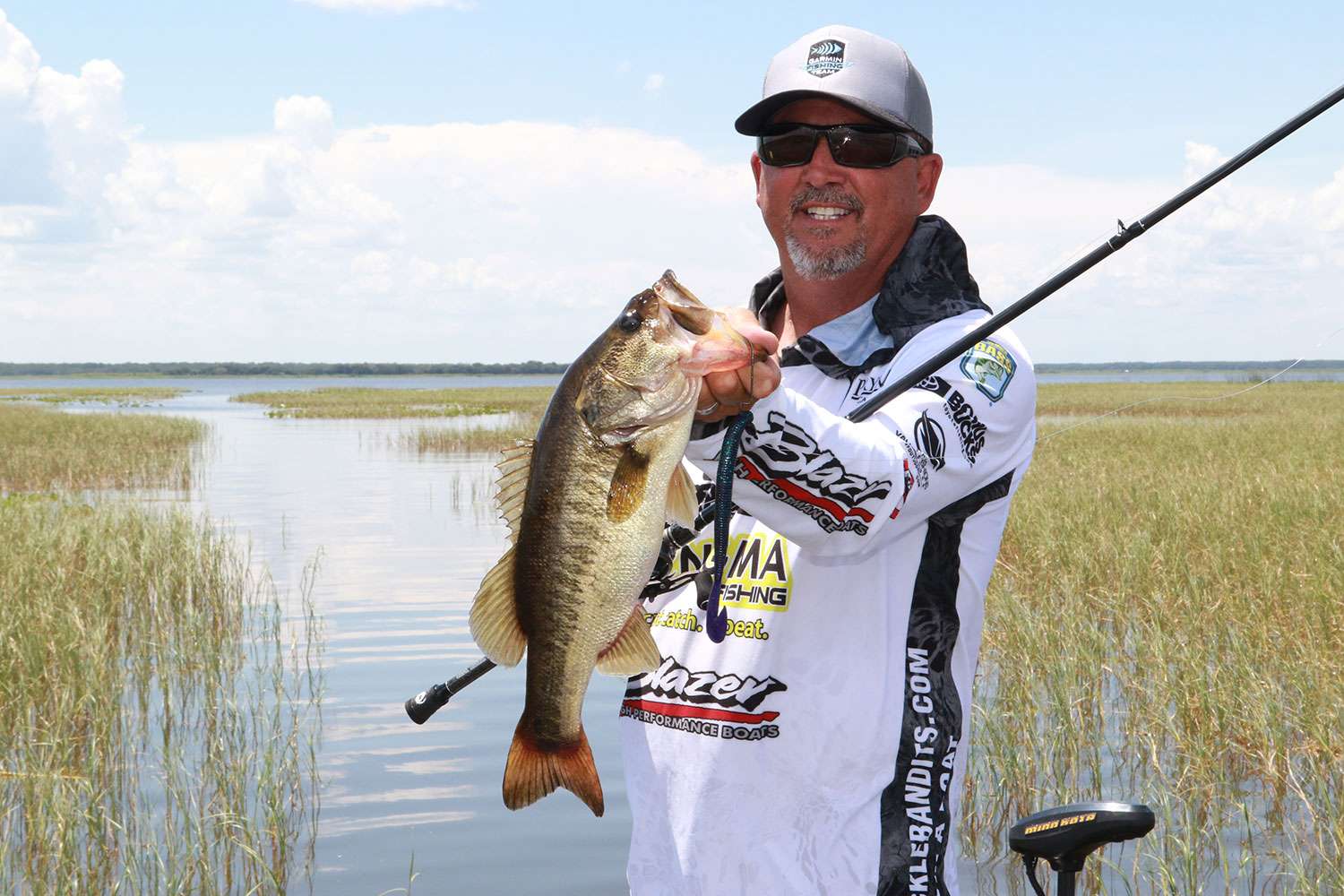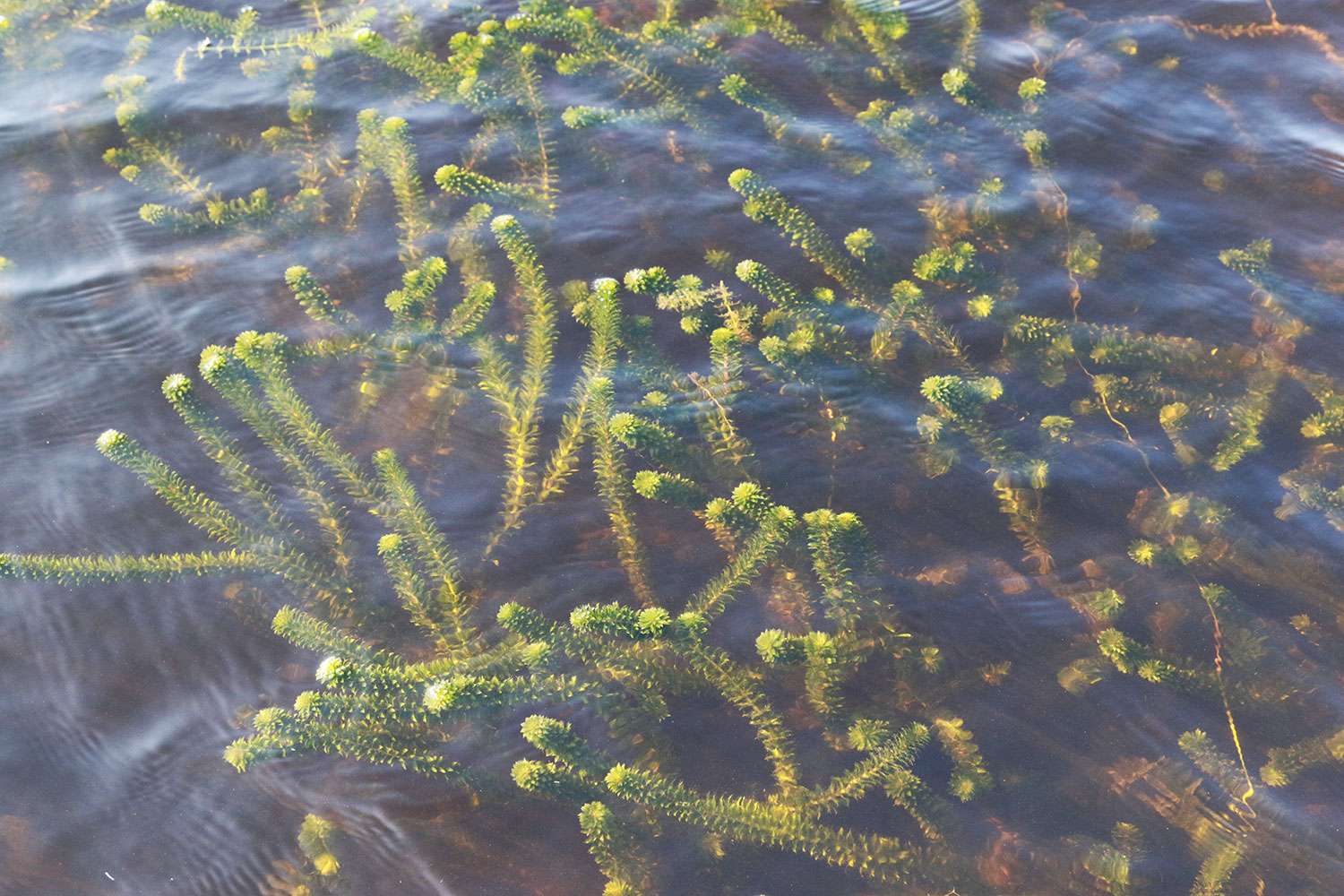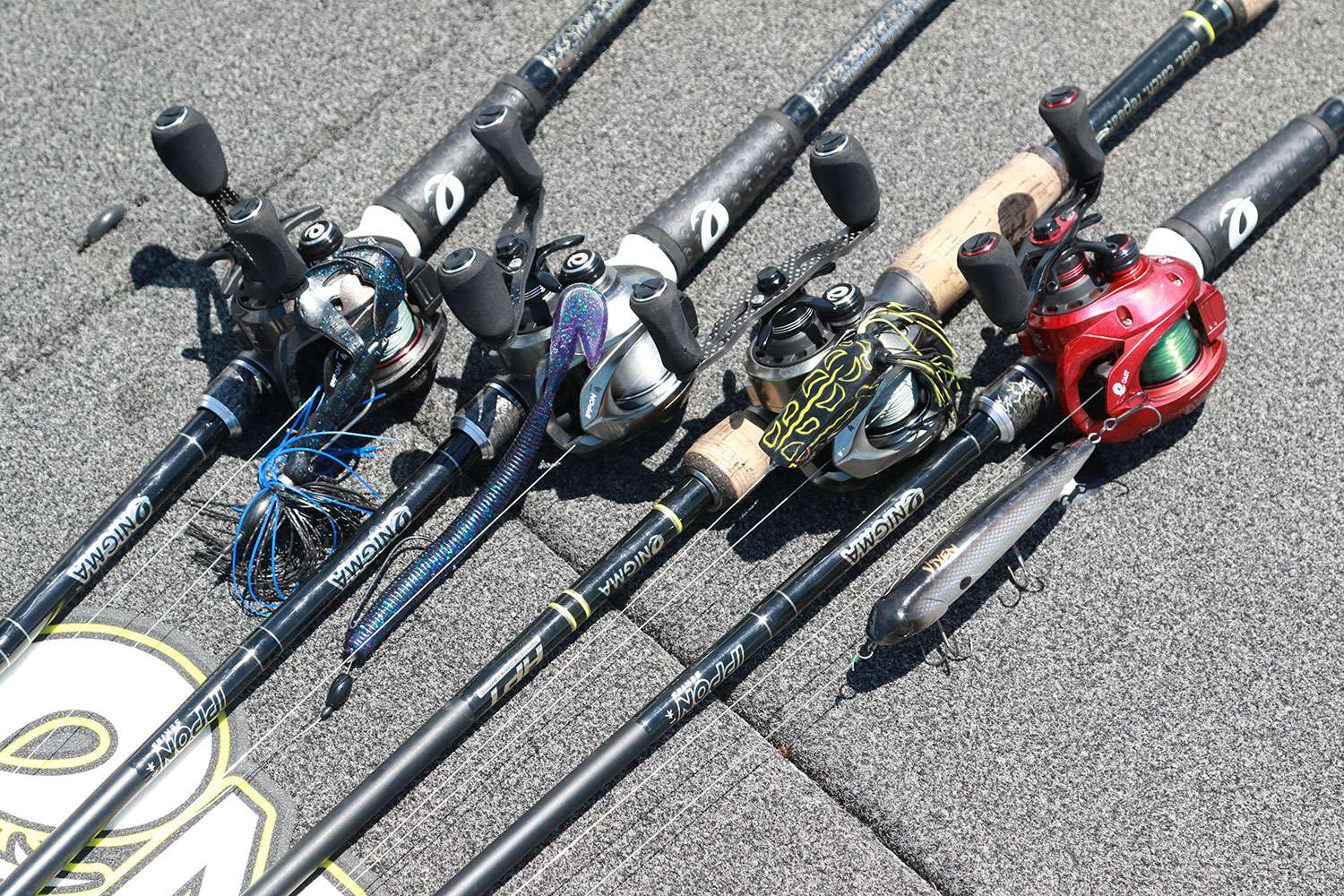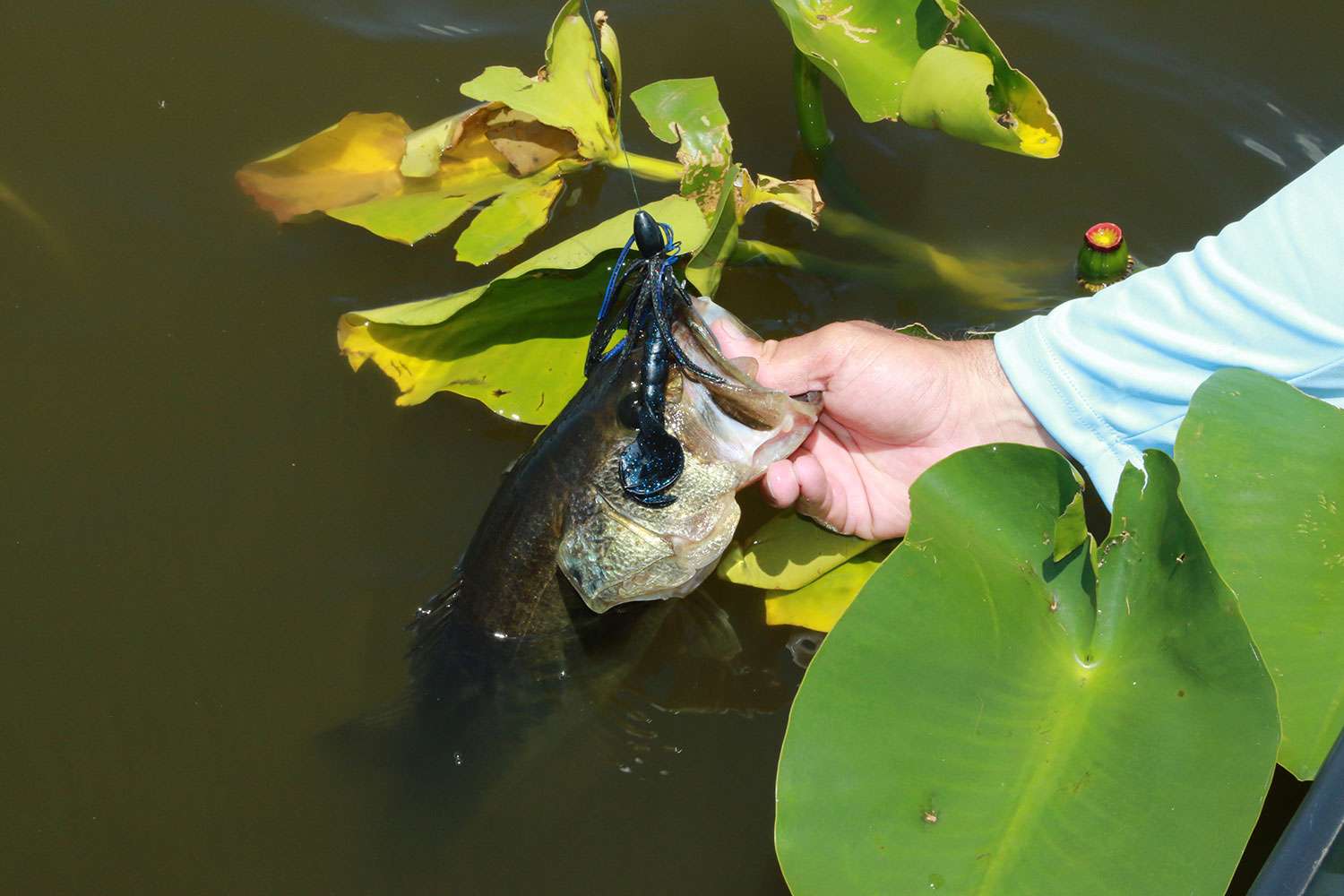
Jesse Tacoronte loves a good topwater bite as much as anyone, but when the dog days of summer bring chokingly hot conditions, the Elite angler from Orlando, Fla., knows it’s more or less an occasional warm up to the day’s main pattern.
Over the shell bars and hydrilla edges where bass drive baitfish to the surface, Tacoronte targets schoolers from the first hour after daybreak until intensifying sunlight stymies the fish’s surface affinity.
A steady cadence with a walking topwater is the best way to infiltrate the schooling activity — even after a fish misses. Follow-ups are common among hyper-competitive schoolers, but when surface activity slows, he’ll switch to a jerkbait or lipless crankbait to clean up any stragglers.
This is often a fast-paced game of cat-and-mouse, so stay alert and ready to throw in all directions. Best to give your partner a heads-up first, but when schoolers surface, turning aft and firing a cast over the motor takes less time than turning the bow toward the action. Seconds matter, so do what you’ve got to do — and realize this is just the appetizer.
“Believe it or not, the topwater bite is not as important as people think it is,” he said. “Most of the time, I will start by flipping Kissimmee grass or hydrilla first thing in the morning. You’ll catch your biggest fish of the day flipping in the morning — even when it’s almost still dark. They’re territorial; those fish live in the grass, their food source is there. They don’t leave just because it gets dark. They’re not migratory.”
Buried in cover
Once the topwater bite’s done — or if it never materializes — Tacoronte commits the majority of his day to the flipping/pitching game. Seeking solace from the stifling heat, summer bass typically park in the heavy cover and nap away the long, uncomfortable hours.

His first look goes to the dense hydrilla beds flourishing throughout Florida’s mostly shallow, bowl lakes. Topped-out patches are ideal, but even the grass that’s barely tickling the surface will suffice.
This cooler, shady habitat laden with forage often forms points, cuts and holes. These are his primary targets, as the fish find their best ambush opportunities near such anomalies.
“Clean water is what you’re looking for, and if the grass has shell around it, even better,” he said. “The shellfish (freshwater mussels) are plankton feeders and so are shad. Wherever there’s shell that means there will be some kind of baitfish. The other plankton eater is grass shrimp, and they attract bream, so you have all kinds of life around shell bars.”
Complementing the hydrilla, emergent vegetation such as Kissimmee grass, buggy whips (bulrush) and reeds present immediately visible targets. As with hydrilla, the anomalies get top priority, and if he finds blended habitat — Kissimmee grass accented with reed patches or storm-blown wood — Tacoronte will invest a little more time.
Notwithstanding such sweetness, an even brighter gem occasionally catches his eye.
“The small isolated clumps of grass can be incredibly productive,” he said. “A lot of people blow right past them, but I’ve caught double-digit fish off these spots.”
Elsewhere, the vast acreage of emergent grasses spanning most Florida lakes often fosters a needle-in-a-haystack image. However, he said he takes note of how the food chain influences an area’s potential.

“If I’m pitching a grass line and there are no blind mosquitoes, I’m leaving,” he said. “If there’s no food for the bluegill, there’s no reason for the bass to be there.”
Productive patterns
Swimming a Texas-rigged Zoom Old Monster or Mag Speed Worm on a 5/0 hook with a 3/16- to 5/16-ounce weight will temp the feisty ones sitting high in the grass. However, Tacoronte knows that coaxing a big fish buried in the cover means reaching in and ringing the doorbell.
This means a punch rig comprising a 1 1/4-ounce weight, a punch skirt and a Tight Lines UV craw or beaver. No need to tarry, he said. It’s a yes-or-no deal.

“It’s a reaction bite, so they’re not going to sit there and look at a bait for an hour,” he said. “Generally, I don’t hop it more than one time, because they’ll get it on the fall 90 percent of the time.
“The only time I fish the holes in the hydrilla is in the morning with a frog or a topwater. But once the sun gets up, all you see in the holes is baitfish; the bass are tucked inside the hydrilla.”
Make it happen
Tacoronte’s formula for dog days flipping combines equal parts diligence, perseverance and confidence. It’s nice when you find that loaded spot early, but more often than not, success comes at the end of a prolonged search.
“The grass bite is very sporadic, so you just have to figure it out throughout the day,” he said. “I have been in tournaments where I picked up that flipping stick for five, six, seven hours and covered three miles without getting a bite, but in 50 yards, I’ve put 35 pounds of fish in the boat. That’s how fast it can happen. It’s one of those bites you can’t quit on.”
As he explained, the dog days typically find the biggest fish extremely hesitant to participate until that perfect alignment of conditions spurs them to quickly fill their bellies. Predicting these furious feeds is crystal ball stuff, and the fish’s propensity to relocate often complicates matters. Still the payoff is worth the reward.
“When you’re driving down the highway, if you’re not hungry, you don’t look at any exit signs, you don’t look at restaurants, you don’t look at anything,” Tacoronte said. “But as soon as your stomach says ‘feed me!’ you notice everything. ‘Hey, where are we going to eat? Look at that, look at that.’
“It’s the same with any other animal, so unless you get a reaction bite, they’re just letting the bait go by them. You might go by an area and not get a bite, but come back and hour later and wreck ‘em in the same 20 yards.”





